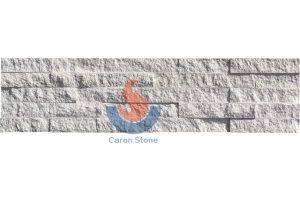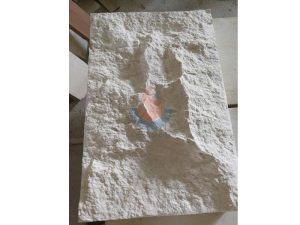Limestone, an ancient and common sedimentary rock, not only occupies an important position in the fields of architecture and sculpture, but also plays an important role in environmental protection and ecological management. From water filtration to soil pH regulation, limestone’s use shows its several purposes in ecological conservation. The function of limestone in ecological protection will be discussed in this paper together with its contributions to environmental improvement, resource management, and ecological restoration to thus highlight the significant place of this ancient material in modern environmental protection.

White Limestone Splitted Culture Stone
Application of limestone in soil improvement
Neutralization of acidic soil
Calcite (CaCO₃), with a great alkalinity, makes up most of limestone. It is thus frequently used to neutralize acidic soil. Long-term fertilizer application or acid rain brought on by rainfall—which is quite detrimental for plant growth—often results in overly acidic soil. Applying limestone powder to acidic soil will help to significantly raise the pH value of the soil, enhance its structure, and encourage good plant development.
Supplementation of nutrients
Additionally valuable nutrients for the soil come from limestone, including calcium. One of the key minerals for plant development, calcium helps encourage root development and raise crop resilience to disease. Applying limestone can increase soil fertility and improve nutrient availability, therefore helping to raise crop output and quality.
limestone’s function in water filtration
Regulation of water pH
Water filtration depends much on limestone. The health of the ecology and the water quality depend on the pH value of water. Limestone is widely used in water treatment to neutralize acidic water. Adding limestone to water helps to raise its pH value, therefore reducing the effect of acid rain on the water and so enhancing water quality and safeguarding of aquatic life habitat.
Sedimentation and removal of pollutants
In water treatment, limestone can also help contaminants be removed and precipitation encouraged. For instance, limestone can combine with phosphates in water to create insoluble calcium phosphate precipitates, therefore removing phosphorous from the water and lowering eutrophication. Furthermore helping to clean water and eliminate toxic ions and suspended materials is limestone.
The role of limestone in air pollution control
Desulfurization of flue gases
The application of limestone in air pollution control is mainly reflected in flue gas desulfurization technology. One of the primary causes of acid rain, sulfur dioxide (SO₂) is present in great abundance in the flue gas created by burning coal and other fossil fuels. In the desulfurizing process, limestone serves as a reactant; it reacts with sulfur dioxide to produce calcium sulfate, so removing sulfur dioxide from the flue gas, so lowering the generation of acid rain, and so preserving the environment.
Particle removal
One can also clean the air of particle matter using limestone. Limestone powder can mix with airborne particulate matter in industrial production to create bigger particles that are simple to remove with dust removal machinery. This approach can help to lower the concentration of particulate matter in industrial emissions and hence enhance air quality.
Application of limestone in ecological restoration
Mine reclamation
Limestone also plays an important role in mine reclamation. Often destroyed during mining is soil and plants, therefore upsetting the ecology. By means of limestone powder, one can enhance damaged soil, modify its pH, and supply required nutrients, so fostering vegetation recovery and ecosystem reconstruction. Furthermore employed for the treatment and solidification of mining waste is limestone, therefore lowering harmful effects on the environment.
Wetland restoration
Wetlands are important ecosystems that play an important role in water purification and biodiversity protection. Wetland restoration also use limestone. Limestone can be used, for instance, to change the pH of wetland soil, enhance its hydrological conditions, and encourage the development of wetland vegetation. These steps assist wetlands to regain their natural ecological purposes and raise their environmental quality.
The role of limestone in resource management
Sustainable resource utilization
The mining and use of limestone are highly sustainable. Rich in resources, limestone formations are quite scattered. Its mining and use have less effects on the environment than those of other mineral resources. Reflecting its several use techniques, limestone offers a broad range of uses from environmental protection to building materials. In resource management, logical limestone mining and use will enable targets for sustainable development to be reached.
Architecture and ecological design
In modern architectural design, limestone is widely used in green buildings and ecological design. Through appropriate design and construction, limestone not only boasts high building performance but also maximizes its environmental protection ability. For instance, limestone’s great thermal insulating qualities help to lower building energy usage by serving as a facade material. Concurrent with this, limestone’s inherent beauty can improve the building’s visual impact and harmonize with the surroundings.

Split face white limestone 30×15
As a traditional and multifunctional material, limestone plays an important role in ecological protection and environmental management. Along with being very important for water purification, air pollution control, and soil enhancement, it also helps with resource management and ecological restoration. Through control of soil pH, enhancement of water quality, elimination of air pollutants, and encouragement of ecological restoration, limestone has made significant contributions to environmental protection. As research and technology progress and application areas grow, limestone’s contribution to environmental protection will remain crucial and assist to reach the aim of sustainable development.





